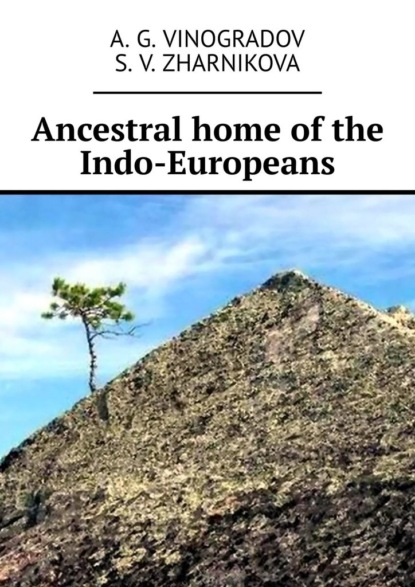
Полная версия:
Ancestral home of the Indo-Europeans
Apparently, the picture has not changed to this day. But then it is absolutely inexplicable how the ancient Iranian tribes, who came from their alleged Near-Asian ancestral homeland with its beech forests to the territory where beech forests also prevailed and still prevail, the ancient Indo-European name of this tree completely lost.
Probably, such a situation could only develop if the ancient Iranians came to the territory of the Iranian Highlands from areas where the beech does not grow.
And here it is appropriate to recall that, as noted by T. V. Gamkrelidze and V. V. Ivanov: «the beech is absent to the north-east from the Black Sea to the lower reaches of the Volga throughout the entire postglacial period.»
Hornbeam (Carpinus) (map No. 3), a genus of deciduous trees, rarely shrubs of the hazel family. A trunk with smooth gray bark. The fruit is a single-nested, single-seeded nutlet with a leaf-shaped wrapper. About 50 species in Europe, East Asia and North America. There are 5 species in the USSR – in the West of the European part, in Crimea, in the Caucasus and in the south of Primorsky Krai. The hornbeam does not tolerate boggy and acidic soils. Heavy, hard wood is used in the manufacture of weaving shuttles, musical instruments, and in mechanical engineering.
The most common hornbeam (C. betulus) and Caucasian hornbeam (C. caucasicus). Trees up to 30 m high. Frost-resistant. Trees begin to bear fruit from the age of 20 (yield of nuts up to 1.5 tons per 1 ha). In the Crimea and the Caucasus grows the eastern hornbeam, or meadowsweet (C. orientalis), a shrub or 32 tree with smaller leaves. The hornbeam grows in the Near East, makes up a significant part in the forests on the western shore of the Caspian Sea and dominates together with the oak in Karabakh.
In the Caucasus, in Southern and Eastern Europe (pure hornbeam forests are known only to the east of the Vistula and in the upper Bug), in Asia Minor and Iran, the eastern hornbeam or hornbeam grows in the lower, less often middle belt of mountains to a height of 1200 m. But, like beech, throughout the postglacial period to the north-east of the Black Sea, the hornbeam is absent. And with this tree, whose ancient Indo-European name is in many Indo-European languages, but not in the Indo-Iranian ones, a situation similar to «beech» has developed.
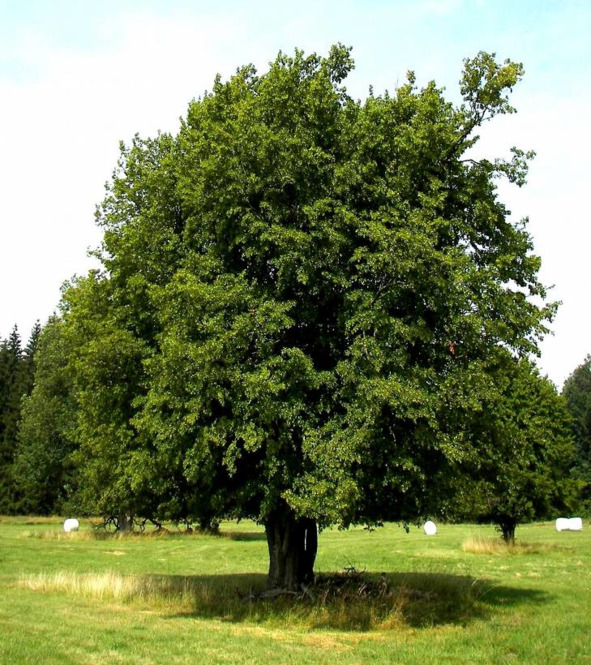
Common hornbeam
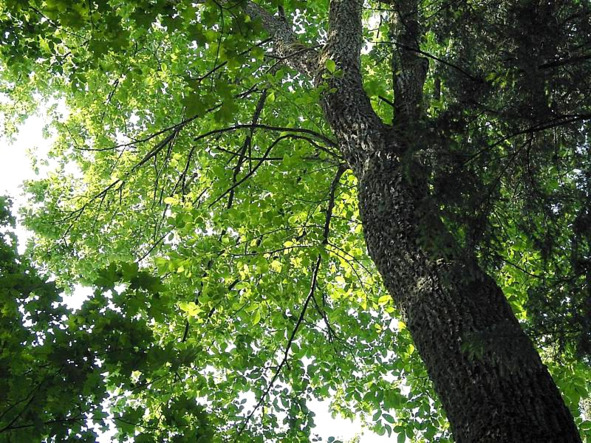
Caucasian hornbeam
Yew (Taxus), (map No. 3), a genus of coniferous evergreen trees and shrubs of the yew family. Cones contain 1 seed, surrounded by a red fleshy seedling and resembling a berry in appearance.
About 10 species distributed in Europe, Asia Minor and East Asia, the Caucasus, and North America. In the USSR, 2 species, yew berry, or non-purulent-tree (T. baccata), grows in Belovezhskaya Pushcha (Western Belarus), Bukovina (Western Ukraine), Southern Crimea, and the Caucasus. Tree up to 27 m high.
Shade tolerant. Lives up to 3 thousand years. Its solid, durable, reddish-brown wood is highly regarded and used in furniture manufacturing and for turning. The whole plant is poisonous especially for horses. Yew-pointed, or Japanese (T.cuspidata), grows in the Far East, in China (Manchuria), Korea and Japan. Tree up to 20 m high; gives valuable wood (mahogany or rosewood).
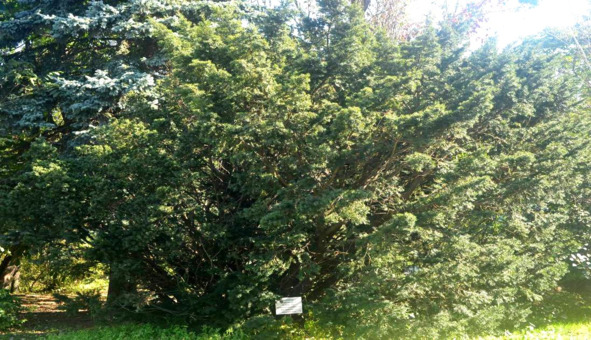
Yew spiky
This ancient Indo-European name also does not exist in the Indo-Iranian languages.
«Yew is spread in Europe from Scandinavia to the mouth of the Danube, its eastern border roughly coincides with the border of beech… Yew in historical times is not found in Eastern Europe and the Northern Black Sea… yew is especially common in the more southern regions of the Caucasus (starting from the North Caucasus), Asia Minor and parts of the Balkans, «writes T. V. Gamkrelidze and V. V. Ivanov.
The situation is repeated again, similar to the «beech» and «hornbeam». Yew is growing in the alleged Near-Asian ancestral homeland, is also widespread in the new Iranian homeland, and there is no Indo-European name for this tree in the Indo-Iranian languages, just as it was not in historical time in Eastern Europe and the Northern Black Sea region.
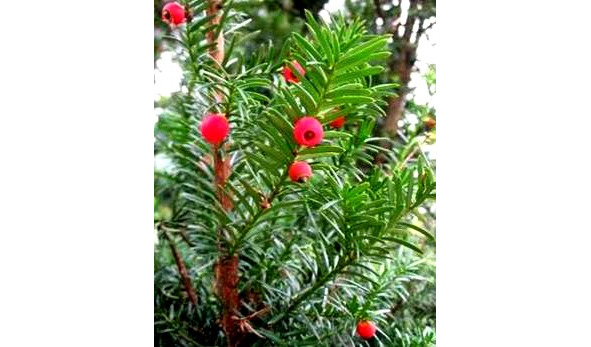
Yew berry
Fir, spruce, pine (map 4). Fir (Abies), a genus of evergreen conifers of the pine family. The trunk is straight, up to 80 m high, with a thick, usually conical crown. The bark is smooth with nodules – containers of resin. The leaves are linear, flat, at the apex for the most part blunted, below with two light strips along which the stomata are located.
About 50 species; grow in the mountains, less often on the plains of the Northern Hemisphere. In the USSR – 9 species and approximately 16 species introduced. Valuable resins are obtained from the bark.
In the USSR, Siberian fir (A. sibirica) is most common – in the north of the European part and in Siberia, on the plains and in the mountains (to the upper border of the forest). A slender tree up to 30 m. high. Fir balsam is obtained from the bark, fir oil is obtained from needles and branches.
In the Caucasus, a relict species of Caucasian fir, or Nordmann fir (A. nord-manniana), a tall (up to 50 m) tree with a lowered crown, grows. Lives up to 500 years.
In Europe, white fir (A. alba) grows, giving valuable wood.
T. V. Gamkrelidze and V. V. Ivanov indicate that «fir in its various forms has been known since the Middle and Late Atlantic period (7—4 thousand BC) in the Transcaucasia and Western Asia, as well as in the lower reaches «Volga, in Eastern Europe, in the Pripyat-Desna basin. Later, fir is pushed aside by some other species of trees, preserved mainly in the mountainous regions of Europe, the Caucasus, Western Asia and Eastern Europe.»
But I would like to emphasize that even during the peak of the Valdai glaciation, when, unlike Western Europe, «within the Russian plain, forests occupied a large area in the form of a wide strip crossing it in the direction from the south-west to the north-east», they were represented mainly by birch-pine and spruce-fir forests. At the same time: «Regarding the nemoral and subtropical shrub-forest types of vegetation, the following should be noted: the fact that these types were preserved in the south of Europe during the Valdai glaciation era clearly indicate the results of the florocenogenetic analysis of modern vegetation of the Mediterranean countries.»
How in such a situation, when the climate of Asia Minor has not practically changed from the time of the Valdai glaciation to the present day, fir could be pushed to the mountainous regions of Europe, the Caucasus and, most importantly, Asia Minor, where it is currently not available. According to modern vegetation maps in the Old World, the range of the fir genus is the northeast of the European part of Russia, Siberia, China (northwest), slightly in the Caucasus and the Western Mediterranean.
G. I. Tanfilyev noted that: «Siberian species enter the European taiga, except for larch, also fir and cedar. Of these, cedar grows on this side of the Urals in small groups and separate trees among forests and other species, while larch and fir even form forests in places.»
Currently, fir occupies 12 million hectares in Russia. Thus, there is no certainty that fir grew in antiquity in Asia Minor, but the fact that it had and has an extensive range in northeastern Europe and in Siberia is a fact.
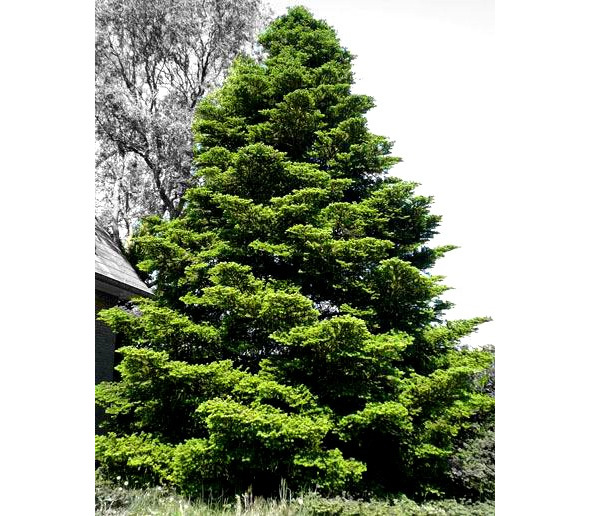
Siberian fir
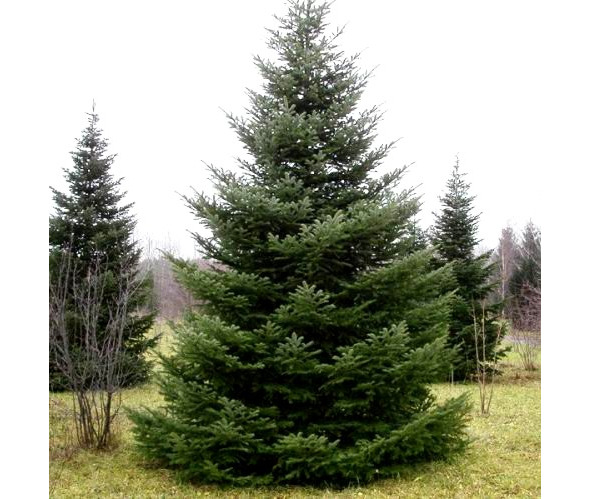
White fir
Pine (Pinus), a genus of coniferous evergreen trees and creeping shrubs of the pine family. Height 1.5—75m. Needle needles. Pines are photophilous, form forests and groves on well-drained soils and rocky slopes, but can also grow in wetlands.
They live up to 350 years. About 100 species in the forest zone of Eurasia and North America, less often in the mountains of the tropics of the Northern Hemisphere.
There are about 12 species in the USSR. Scots pine (P.silvestris) forms forests in the European part and Siberia. A tree 40 m high. It provides timber and ornamental wood, fuel, resin, var, turpentine, turpentine essential oil, rosin. From the needles get vitamin C.
On the Kola and Scandinavian peninsulas, the Lapland pine (P.lapponica), close to it, grows in the mountainous parts of the Crimea and Western Transcaucasia – the Crimean pine, or Pallasiana (P. pallasiana).
In Transcaucasia, the Pitsunda pine (P. pityusa) is known.
Siberian cedar pine, cedar dwarf pine, and Korean or Manchurian pine (P. koraiensis) grow in the USSR. It grows in the Far East, in the mountains of Manchuria, northeast of Korea and in Japan (Honshu Island).
V.V. Ivanov and T. V. Gamkrelidze write that pine and its varieties from ancient times are represented in the mountainous regions of the Caucasus and the Carpathians, as well as in the Black Sea region.
But it should be noted that in ancient times, pine was spread by no means only in these territories. So, at the peak of the Valdai glaciation in the Oka basin, spruce-pine forests of the north-taiga type were noisy, in the middle reaches of the Desna forests with spruce and Siberian cedar pine were locally distributed.
According to paleogeography in the ancient Holocene (2 thousand years ago), spruce, pine and alder were present in the forests of the Vologda Oblast. A similar situation was in other areas of the central part and the north of Eastern Europe. In general, conifers began to play a significant role in the vegetation cover of Eurasia since the Triassic period, which began about 240 million years ago.
«Among modern conifers, the most ancient families are Araucariaceae, Podocarpaceae, and especially pine… plant residues (including pollen grains), more or less confidently related to the genus pine, are known from Jurassic deposits.
Currently, forests with a predominance of pine are most pronounced in the northern regions of Eurasia and North. America. Pine forests in Russia occupy an area of 108 million hectares.
The range of the genus pine is the whole of Europe, Siberia, the Himalayas, the Pamirs, China, Japan, and Asia Minor. In Western Asia there is no pine.
Pine forests are not as significant as T.V. Gamkrelidze and Vyach. Sun Ivanov, and in the Caucasus. So G. I. Tanfilyev, describing the forests of the Western Transcaucasia, notes that: «Very characteristic of the coast, found only at the very sea, is a seaside pine tree, a tall tree growing in small groups between Novorossiysk and Cape Pitsunda, and only at this last point it forms a large forest.»
He notes that «in the forests on Talash there are no conifers at all, except yew and juniper,» and «in the East Caucasus, only pine and juniper are found from coniferous species, of which pine, however, goes only to the meridian of Elisavetpol.»
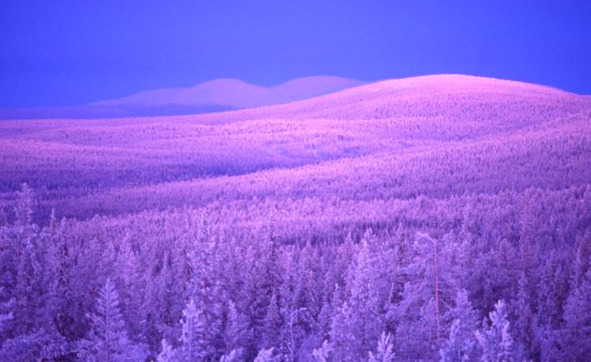
Lapland pine
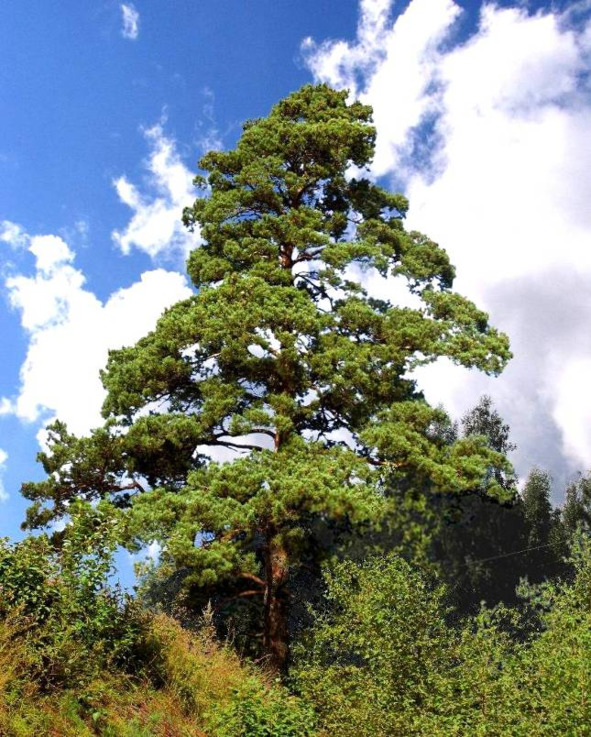
Common pine
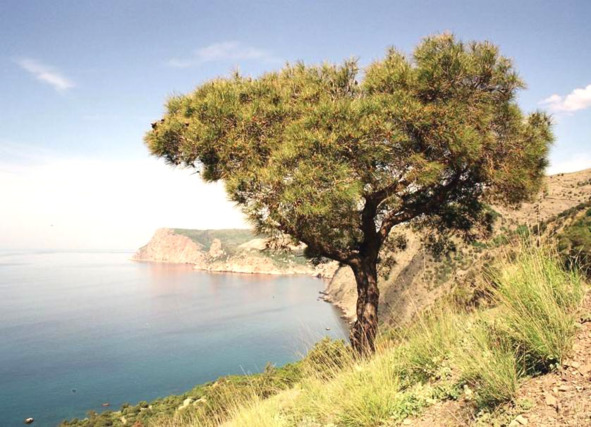
Crimean pine
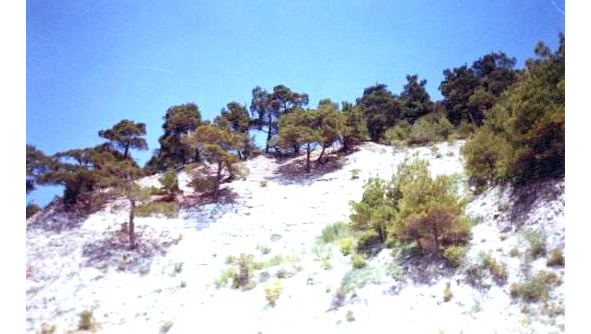
Pine Pitsunda
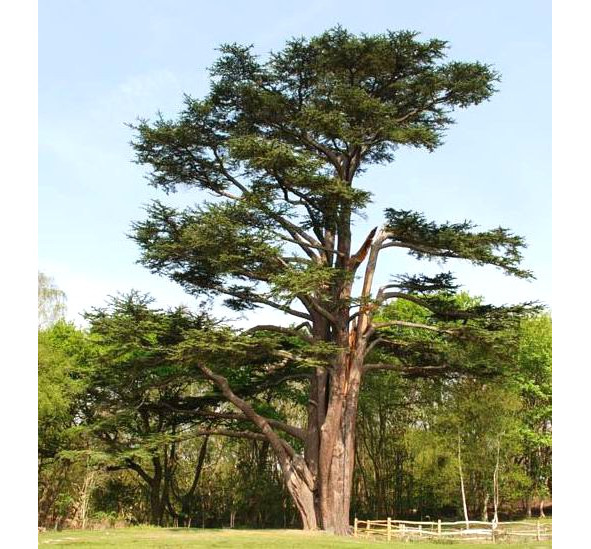
Siberian cedar
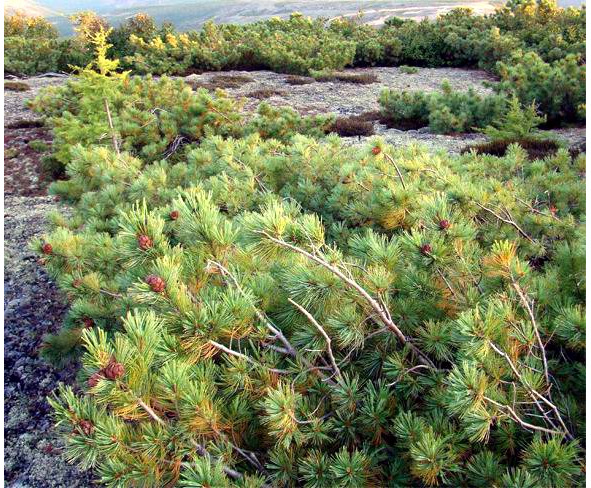
Cedar elfin
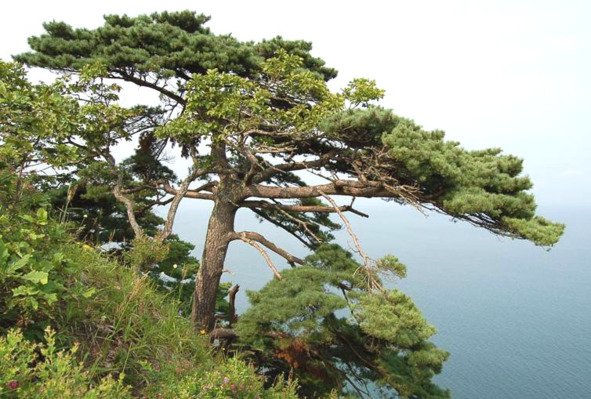
Korean pine
Spruce (Picea), a genus of coniferous evergreen trees of the pine family. The most important forest-forming breed. Shade-tolerant spruce, winter-hardy, suffers from dry air. He lives 300 years. About 40 species – in Europe, Asia, North America. There are 8 species in the USSR. In the European part, from the northern border of the forest to the northern border of chernozem, common spruce, or European (P. abies, go P. excelsa), grows 20—50 m. high. The wood is white, light and soft, used in construction. Resin, tar, turpentine, rosin, wood vinegar, tannins are extracted from it.
In the north of the European part, the Urals and Siberia, it is replaced by Siberian spruce (P. obovata). Finnish spruce (P. fennica) lives in North Karelia, East spruce (P. orientalis) in the Caucasus, Shrenka spruce (P. schrenkiana) with bluish needles in the Dzungarian Alatau and Tien Shan, and Korean spruce (P. koraiensis) and ayan spruce (P. ajanensis).
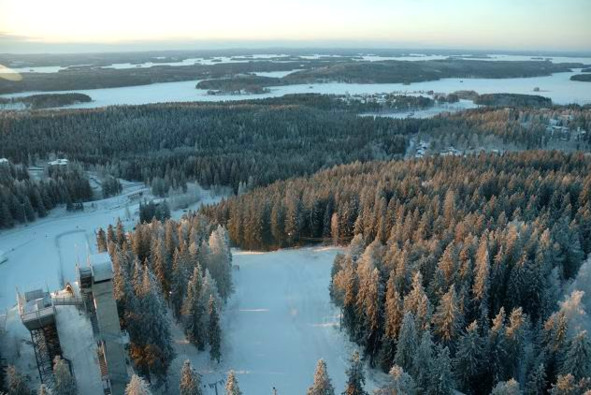
Finnish spruce
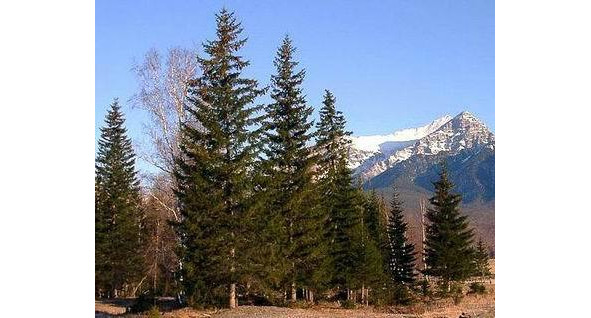
Siberian spruce

Eastern spruce
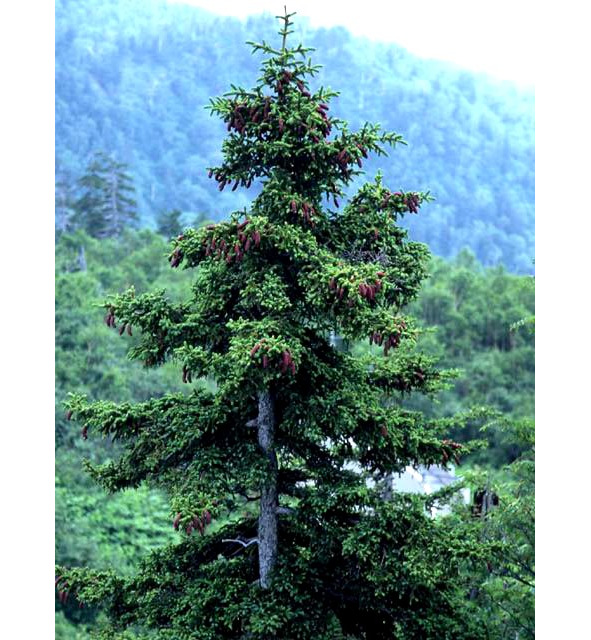
Spruce Shrenka
Fir-tree Korean Fir-tree ayan The authors of the «Indo-European language and Indo-Europeans» argue that: «In ancient times, spruce was represented only in the highlands, in particular in the Caucasus and in the mountainous regions of Central and Southern Europe.»
However, L. S. Berg believed that spruce forests prevailed in the north and in the center of Eastern Europe 11—10 thousand years ago; 9—8 thousand years ago, behind the amount of spruce, it fell slightly; 7—6 thousand years ago, in a temperate, warm and humid climate, the secondary distribution of spruce began. «In 1 thousand BC in colder and wetter conditions, spruce begins to penetrate into oak forests. The botanical data indicate that at present «most species and individuals of spruce are kept in an area whose southern border does not extend beyond 35 °N, with the vast majority of spruce stands far north.»
And moreover, even during the maximum of the Valdai glaciation (18—20 thousand years ago), it was from 55 to 63° N that were widespread in Eastern Europe. meadow steppes with birch and spruce forests. As for the Caucasus, spruce is widespread here «mainly in the west of the Greater Caucasus, both on its northern slopes and in the Caucasus, reaching almost Tbilisi in the East. The southern and southeastern border of the eastern spruce lies in Anatolia.»
Thus, the prevailing range of the spruce genus is the north of Eurasia, the Himalayas, China and some of the Balkans, Asia Minor and the Caucasus, i.e. the thesis that in ancient times spruce was represented only in high mountain regions, in particular in the Caucasus and in the mountainous regions of Central and Southern Europe, seems incorrect.
Cornel, Dogwood (Cornus) (map No. 5), a genus of trees and shrubs of the cornel family. Fruits – red fleshy drupes on legs. 4 species in Central and Southern Europe, Asia Minor, Central China, Japan and North America. The genera of derain, dogwood, Svidina and some others are united under the name dogwood.
Doeren (Chamaepericlymenum), a genus of plants of the cornel family. Low shrubs with underground creeping woody rhizomes and grassy annual stems. Fruits are red drupes. 3 species: in Europe, the Far East and North America. All are found in the USSR.
T. V. Gamkrelidze and V. V. Ivanov write in their work that: «Cornel is distributed mainly in the relatively more southern regions of Europe, the Caucasus and Western Asia.»
Currently, 15 species of wild dogwood are growing in our country, among them: Holly dogwood, reaching the European part to Arkhangelsk, where it bears fruit in the same way as in the Crimea; brushwood cotoneaster, common in Crimea, the Caucasus and Western Asia, also bearing fruit to the latitude of Arkhangelsk; cotoneaster whole or ordinary, growing in the Baltic states, Western Belarus, the Caucasus, Ukraine, Crimea and Central Asia, and also reaching Arkhangelsk; black-fruited cotoneaster, common in Eurasia from Central Europe to China, and from Lapland to the Caucasus and Central Asia, growing everywhere except for the tundra and rain-fed deserts.
Fruits are eaten raw, for jam, compotes. Solid heavy wood is used for various crafts. Dogwood contains tannins. Good honey plant.
In addition, dogwood varieties are widely distributed under the general name Derain, about 50 species of which grow in temperate climates. This is Siberian white Derain (white swine, connecting rod), growing in the north of the forest strip of the European part of our country, in Siberia and the Far East. This shrub prefers wetter and wetter places along the banks of rivers, lakes, river floodplains and does not grow in the south of the steppe zone.
Red Derain (blood dogwood) is distributed throughout the European honor of Russia, except for the far North and Caucasus, as well as central and southern Europe. This shrub lives in floodplains, thickets, undergrowth, and forest edges.
Common Derain – dogwood, spread to the north to the city of Orel. Swedish Derain (Ch. Suecicum) grows in the north of the European part of the USSR and in the Far East;
Canadian Derain (Ch. Canadense) and Unalashkin Derain (Ch. Unalaschkense) – in the Far East.
Thus, to argue that dogwood is in 5—4 thousand BC grew only in the southern regions of Europe, the Caucasus and Asia Minor, it is hardly possible.
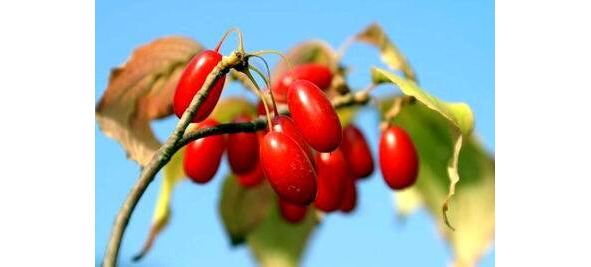
Cornel

Cotoneaster
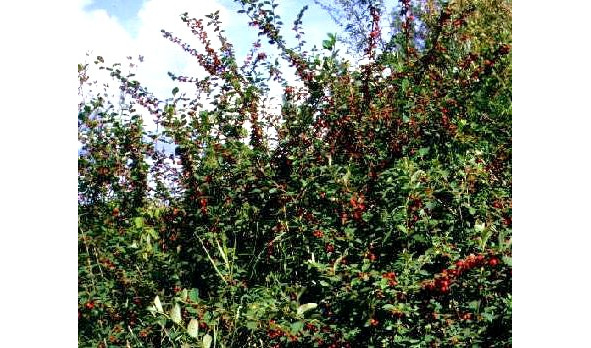
Cotoneaster Whole
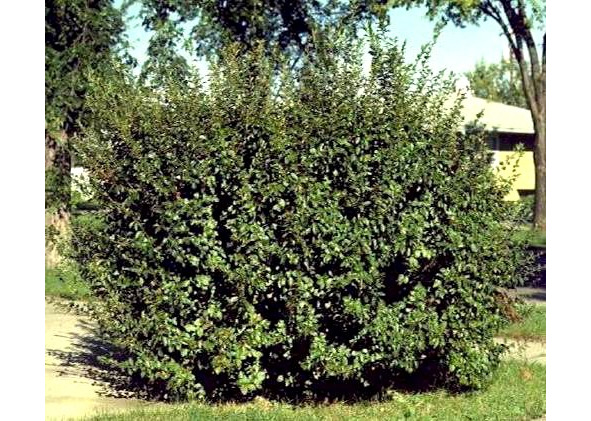
Cotoneaster aronia
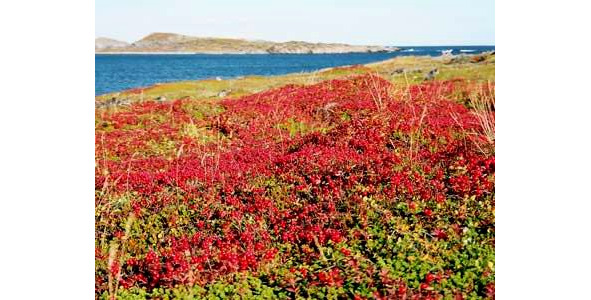
Derain swedish
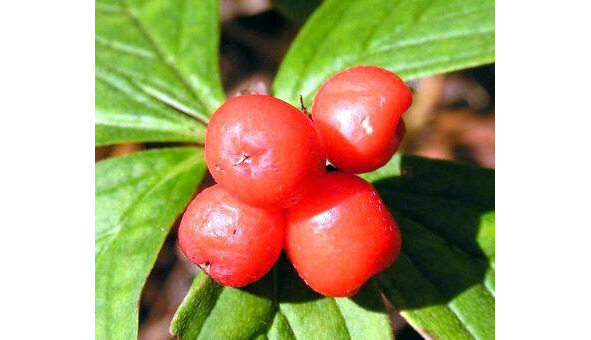
Derain Canadian
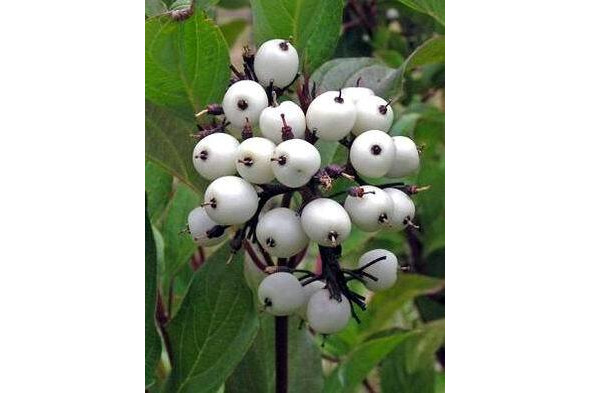
Derain white
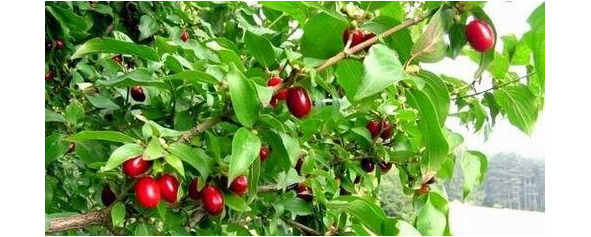
Siberian Ordinary derain
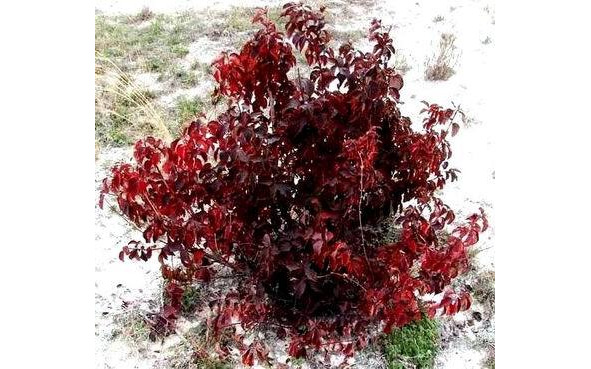
Derain red (blood dogwood)
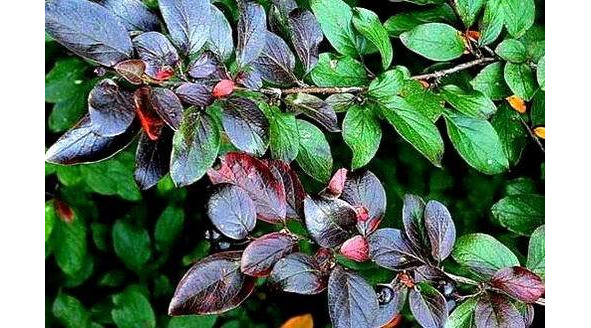
Dogwood Holly
Walnut (Juglans) (card No. 6), a genus of plants of the walnut family.
Deciduous monoecious trees with large unpaired pinnate leaves. Flowers – in the axils of the covering leaves; stamen – in hanging multi-flowered catkins; pistillate – in small-flowered apical inflorescences. The fruit is stone-fruit, with a green fleshy outer shell and a hard, ligneous inner. Edible seed, without endosperm. 14—40 species growing in mixed broad-leaved forests, mainly in the mountains of southern Europe, Asia and America. Many species have been bred since ancient times for the sake of nutritious tasty fruits, to obtain valuable beautiful wood. In the USSR, 2 species grow wildly: walnut and Manchu walnut.
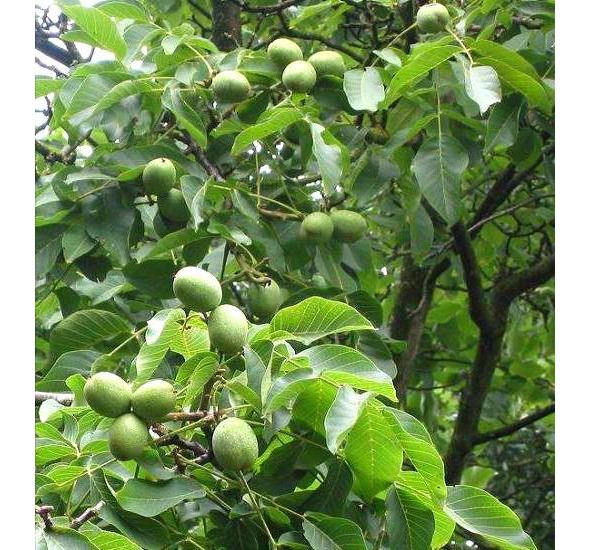
Walnut
In the USSR, 9 types of hazelnut are common: ordinary, variegated, Manchurian, short-tubular, large-fruited, Pontic, Colchis, Imereti and bear nuts.
Variegated, short-tubular and Manchu hazel grow in the Far East. Pontic, Colchis, Imereti hazel grow in Transcaucasia. Large hazel, or hazelnuts, has become one of the founders of large-fruited garden forms. All of the listed hazel species, except for a bear nut, are tree-like shrubs 5 to 8 meters high.
The bear nut develops into a mighty tree up to 25 meters high. It competes with beech in beauty and power, lives up to 200 years. A bear nut gives up to 20 tonn of fruit. The wood of this tree, growing in the Caucasus and in the southwestern regions of the USSR, is highly regarded.
In forestry, hazel, or hazel, is of greatest importance. This multi-branched shrub 5—8 meters high grows in coniferous-deciduous and broad-leaved forests of the European part of the USSR. Fruits are single-seeded nuts with a tight shell.
Nuts ripen in August-September. Separate bushes give up to 10 kilograms. Almost the yield of thickets is up to 500 kilograms of nuts per hectare. Harvest years are constantly alternating with low-yielding.
Hazel is easily propagated by mature nuts, rooting of shoot branches, perennial shoots and dividing bushes. Nuts during autumn sowing to a depth of 5 centimeters rise well next spring. The kernel of the nut contains 55—70% fat, 14—18% easily digestible proteins, 2—5% sucrose, B and C vitamins, iron salts and trace elements. Kernels are eaten raw, dried and fried. Flour from nuts has been stored for more than 2 years, without losing its taste and nutrition.
By caloric content, kernels are superior to white bread and meat. (1 kg. Hazel kernels – 5840, pork – 3860, rye bread – 1960, potatoes – 860 kcal). In peanut butter, 65% oleic, 9% palmetic and 1% stearic acid. The vitamin content is also high.
The hazelnut oil is delicious, reminiscent of almond. It is used for the production of cosmetics, as well as in painting.
Hazel wood is light, flexible, strong, and white with a pinkish tint, small-layer, and glossy. Coal from wood is suitable for the manufacture of gunpowder.
Winemakers need sawdust. Bark and leaves are used in the leather industry.
Hazel pollen is a good bribe for bees.
Already 7—6 thousand years ago (the Atlantic period) in the northern and central part of Eastern Europe, «a large distribution of oak forests with linden, elm and hazel.» «In the loch-like loam of Likhvin there were pollen grains of hazel, but this time is 10—11 millennia from us, that is, VIII – IX millennium BC…»
Paleoclimatologists note that in the second half of the boreal period (which ended 7700 years ago), i.e. at the beginning of 6 thousand BC in these areas, a significant amount of hazel pollen appears, the culmination of which refers to the Middle Holocene (5700—5000 BC), and hazel accounts for 5% of the total species composition.
The assertion of T. V. Gamkrelidze and V. V. Ivanov that the name of the nut in the common Indo-European vocabulary is related specifically to walnuts does not seem very convincing. Although the walnut is endemic to the south, the ancient Romans called it Jovis glans, i.e. Jupiter’s Acorn. And, although the walnut grows wild in Greece, it is believed that it went wild there. The range of wild walnuts is southern Kazakhstan, Central Asia, Iran, Afghanistan, the western parts of the Himalayas and Tibet, and southeast Transcaucasia (Talysh).
N. I. Vavilov wrote that: «Afghanistan as a whole is included in the general range of wild walnuts… in Asia Minor and Europe, wild walnuts should be considered descendants of wild cultivated plants… In western Georgia, huge walnut forests are rightly regarded as overgrown ancient gardens abandoned during the «Georgian-Persian and Georgian-Turkish wars.»
At the same time, wild hazel in Russia today occupies 3 million hectares, and gives a total yield of nuts from 6 to 12 million tons per year. As for the walnut, in its original area (Central Asia), it occupies only 100 thousand hectares. In addition, Pontic Hazel is an endemic of the Pontus Mountains in Asia Minor, where it has been known since ancient Greece as a nut culture («Heracles nut») and is the ancestor of the famous Turkish («Byzantine») walnut varieties.»



